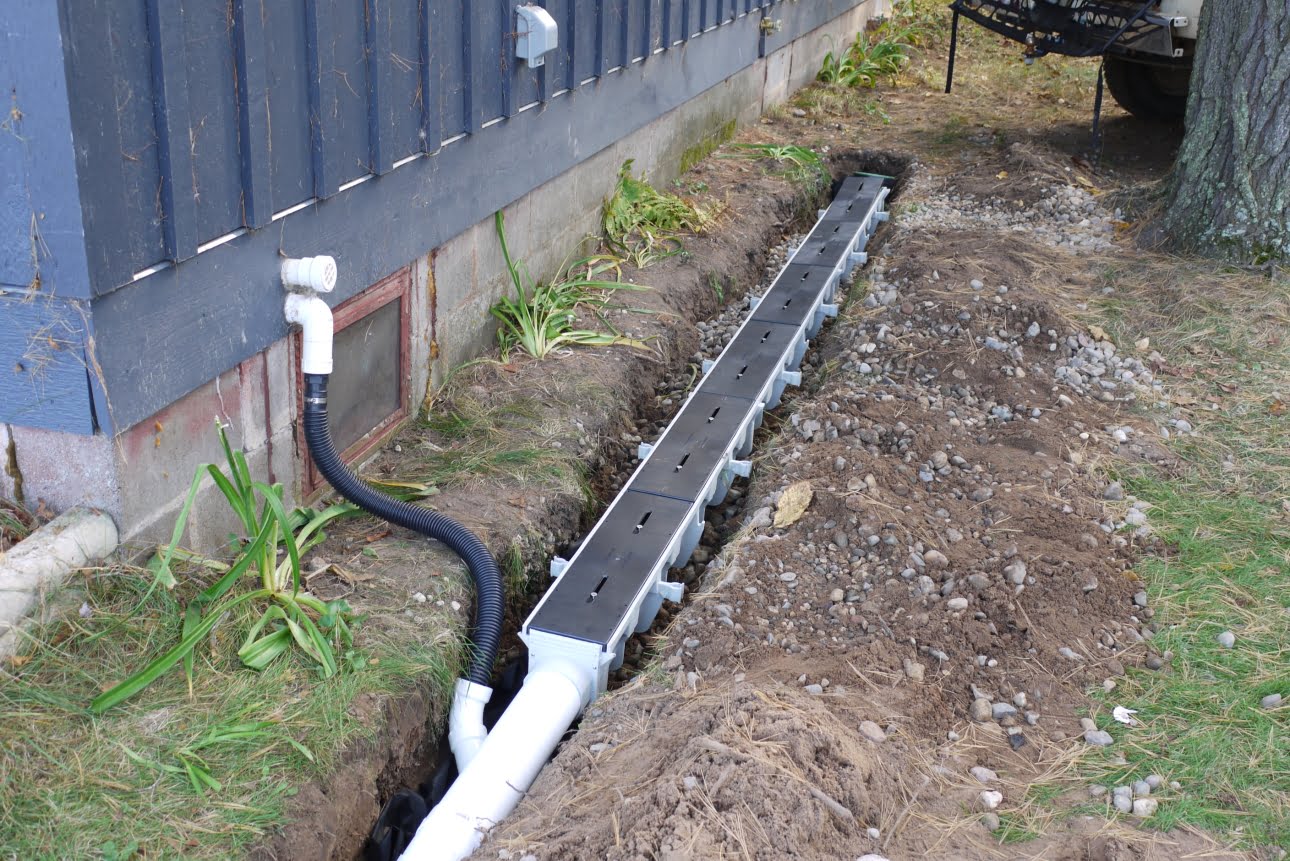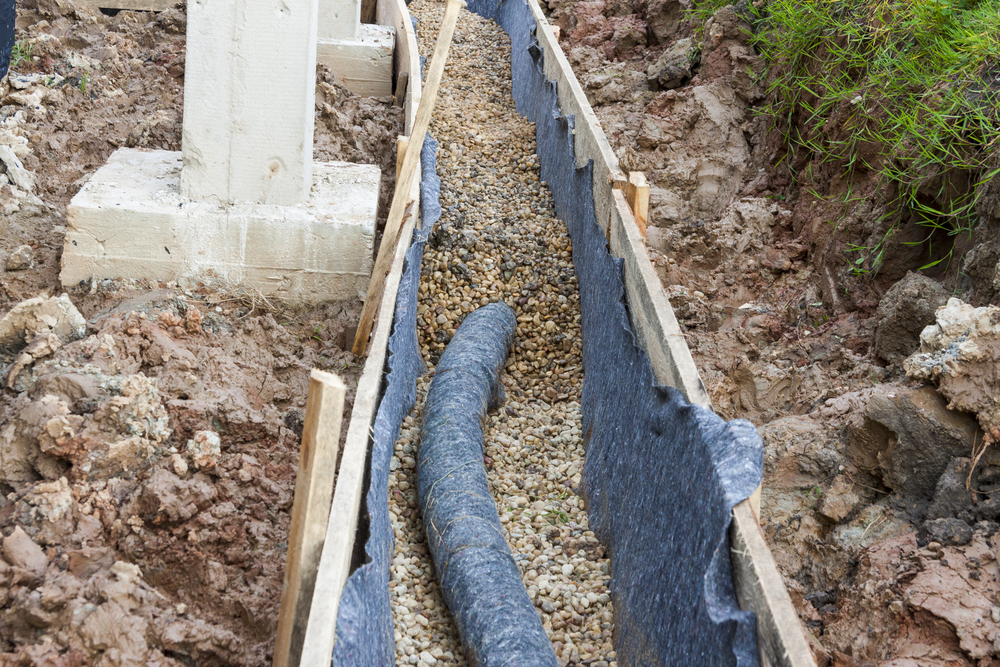Is DIY Worth It? Ft Worth French Drain Installation Compared to Hiring a Pro
Is DIY Worth It? Ft Worth French Drain Installation Compared to Hiring a Pro
Blog Article
Specialist Solutions for Your French Drain Requirements and Setup
When it pertains to handling water drainage on your residential property, a French drain can be a game changer. You require to understand how they function and what aspects to consider prior to installation. It's not practically digging a trench; it has to do with guaranteeing efficient water management tailored to your details demands. Let's explore the vital steps and alternatives readily available, so you can make enlightened decisions for your drainage system.
Understanding French Drainpipes: What They Are and How They Function
A French drainpipe is an easy yet reliable option for managing excess water in your lawn. It's developed to reroute water away from areas vulnerable to flooding or pooling. Fundamentally, it is composed of a trench full of crushed rock or rock, including a perforated pipeline near the bottom. When it rainfalls, water seeps right into the trench, where the pipe accumulates it and channels it far from your residential or commercial property.

This system works by using gravity to guide water towards a designated drain area, like a storm drainpipe or dry well. By developing a pathway for excess water, a French drainpipe helps protect against soil disintegration, safeguard your structure, and preserve the wellness of your landscaping.
Mounting one can significantly boost your backyard's drainage and minimize the threat of water damage. With appropriate understanding of its feature, you can make an informed choice concerning whether a French drain is best for your scenario.
Key Aspects to Consider Before Setup
Prior to diving into the setup of a French drain, it's important to examine a number of crucial variables that can influence its performance. Next, think about the soil type; sandy soils drain better, while clay retains water, affecting the overall efficiency of the system.
A proper slope is fundamental for routing water flow towards the drain. By resolving these elements early on, you'll establish the stage for an effective French drain installment that effectively takes care of water runoff and shields your residential property.
Step-by-Step Guide to Setting Up a French Drainpipe
Since you comprehend the vital aspects, allow's delve into the detailed guide for mounting your French drain. You'll need a couple of vital devices and materials prepared to make the procedure smoother. We'll go through the setup procedure so you can tackle this task with confidence.
Necessary Tools and Materials
Mounting a French drainpipe calls for specific tools and materials to ensure a successful end result. Initially, you'll need a shovel or trenching tool to dig the drain line. A degree is essential for guaranteeing appropriate incline, while a tape measure helps you figure out the proper range. You'll additionally want perforated drainage pipe to enable water to move via. Gravel or crushed stone functions as a filter, protecting against blocking. Don't fail to remember a landscape textile to maintain dirt out of the crushed rock. In addition, a wheelbarrow makes transporting materials simpler. Security equipment like goggles and handwear covers is crucial to shield on your own during the setup. Gathering these tools and products beforehand will certainly simplify your job and set you up for success.
Installment Refine Introduction
When you've gathered your tools and products, it's time to dive into the installment procedure of your French drain. Initially, note the area where you'll dig, making certain a minor slope for correct drain. Next off, utilize a shovel to dig deep into a trench regarding 6 inches broad and 18 to 24 inches deep. Lay landscape textile in the trench, enabling extra material to extend over the top. After that, add a layer of crushed rock, regarding 3 inches deep, prior to putting the perforated pipeline with the holes encountering down. Cover the pipeline with more gravel, loading the trench to about 2 inches underground degree. Finally, fold up the landscape fabric over the gravel, and load the remaining area with dirt. Your French drainpipe is currently prepared!
Typical Products Used in French Drain Equipments
When planning your French drainpipe system, it's necessary to choose the appropriate materials. You'll want to think about different crushed rock kinds and dimensions, as well as the options for pipe materials. Don't ignore textile and geotextiles, which play a key role in stopping debris build-up.
Crushed Rock Types and Sizes
Choosing the best gravel type and size is important for a reliable French drainpipe system. You'll desire to make use of tidy, angular crushed rock, as it enables far better drainage and prevents clogging. Ft Worth French Drain Installation. Typically, a mix of 3/4-inch and 1-inch crushed rock functions best, supplying adequate room for water to stream while still using security
Stay clear of utilizing rounded gravel, as it can change and produce voids that catch water. Keep in mind, the right crushed rock option can significantly influence your drain's durability and functionality.
Pipeline Product Options
A number of pipe materials are typically used in French drain systems, each offering special advantages. PVC pipelines are a popular selection due to their resilience and resistance to deterioration. They're lightweight and very easy to install, making your drain project a lot more manageable. Additionally, corrugated explanation plastic pipelines are versatile and allow for easy flexing around obstacles, although they may be much less durable gradually. Take into consideration using perforated concrete pipes; they supply outstanding water flow but can be hefty and a lot more challenging to set up if you're looking for stamina. Steel pipelines, such as galvanized steel, offer long life and toughness however can be prone to rust. Believe concerning your specific requirements and budget plan when selecting the best product for your French drain system.
Fabric and Geotextiles
Fabric and geotextiles play an essential duty in the efficiency of French drain systems. These materials work as an obstacle, avoiding soil and sediment from obstructing your drain pipes while enabling water to move easily. When choosing textile, try to find a non-woven geotextile that's permeable and durable. This assures that water can enter the system without endangering the drain efficiency.
Installing the material properly is vital; it needs to cover around the gravel and pipe, producing a safety layer. Ensure to overlap joints to stay clear of voids. Making use of top quality geotextiles can considerably extend the life of your French drainpipe, reducing maintenance problems down the line. So, buy good material, and you'll improve your system's efficiency.
Maintenance Tips for Long-Lasting Performance
While mounting a French drainpipe is an important step in taking care of water drain, normal maintenance assures it remains to do successfully over time. Start by on a regular basis looking for any visible particles or debris build-up. Eliminate leaves, dirt, or any type of clogs that can impede water flow. It's likewise important to check the electrical outlet area; make certain absolutely nothing is blocking drain, such as yard or disordered plants.
Think about flushing your drainpipe with water every couple of months to displace any minor blockages. If you observe merging water or slow water drainage, it could be time to dig deeper into prospective problems. In addition, examine the condition of the gravel, pipeline, and fabric. Changing damaged products promptly will prevent bigger issues later on. Ultimately, after heavy rainfall, examine your system to verify every little thing's working appropriately. Regular interest will assist your French drainpipe last much longer and function effectively.
Repairing Common French Drainpipe Concerns
Despite having regular maintenance, problems can sometimes develop with your French drain system. One typical trouble is clogging, which may happen as a result of sediment accumulation or particles. To address this, you can flush the drainpipe with a hose pipe or make use of a plumbing professional's serpent to remove the blockage.
An additional issue is inappropriate drain, which may arise from wrong slope or setup. To repair this, inspect the incline of your drain and change it as required to guarantee water streams far from your structure.

If you experience consistent smells, it might be due to stagnant water. Explore for clogs or leaks triggering Web Site the problem. Frequently examining and addressing these worries can keep your French drainpipe system operating efficiently, shielding your home from water damages.
When to Call the Professionals: Indicators You Need Help
How can you inform when it's time to call in the specialists for your French drain system? When your drainpipe's not efficiently funneling water, it can lead to severe issues like structure damage or mold and mildew growth.
If you're unclear about the drain's layout or the degree of the issue, speaking with a specialist can conserve you time and cash. Trust fund your instincts; if it feels overwhelming, it's finest to get skilled aid to assure your French drainpipe works successfully.
Frequently Asked Concerns
How Deep Should a French Drain Be Installed?
You should install a French drain a minimum of 6 inches deep, but ideally, objective for around 12 to 18 inches. This depth assists properly redirect water far from your structure and protects against flooding.
Can I Mount a French Drainpipe Myself?
Yes, you can mount a French drainpipe on your own. It needs some planning, digging, and proper materials, but with the right tools and guidance, you'll take care of to create a reliable water drainage system for your property.
What Is the Cost of French Drain Installation?
The cost of setting up a French drain usually ranges from $1,000 to $7,000, depending upon aspects like labor, depth, and length. You ought to get multiple quotes to discover the most effective offer for your project.
How much time Does a French Drain Last?
A French drain generally lasts around 30 to 40 years with proper upkeep. You'll wish to frequently check for obstructions and ensure the drainage system operates effectively to optimize its lifespan and protect against expensive repairs.
Do French Drains Pipes Require an Authorization for Installation?
You could need an authorization for setting up a French drainpipe, depending upon local laws. It's best to consult your town or home owner's association prior to beginning any type of job to avoid prospective penalties or problems.
Verdict
To summarize, find investing in a professional option for your French drain requires assurances efficient water administration and secures your home from prospective damage. By comprehending the setup process, choosing the appropriate products, and dedicating to routine upkeep, you can appreciate a durable water drainage system.
When it comes to managing water drain on your property, a French drainpipe can be a video game changer. By dealing with these aspects early on, you'll establish the phase for a successful French drain installment that successfully handles water runoff and shields your building.
While setting up a French drain is an essential action in handling water drain, routine upkeep guarantees it proceeds to carry out effectively over time. Routinely evaluating and attending to these issues can maintain your French drain system functioning successfully, safeguarding your property from water damages.
To sum up, investing in a specialist option for your French drain requires warranties efficient water monitoring and safeguards your property from prospective damages. Ft Worth French Drain Installation.
Report this page